In 2019, renowned photographer Anouk Krantz produced an incredible photobook – West: The American Cowboy – documenting the time she spent with contemporary cowboys.
Luckily for fans of her work, she’s admitted that she’s only ‘scratched the surface of this great western culture and their way of life’ and has produced another beautiful coffee-table book full of brand-new pictures from the American West.
Titled American Cowboys, the book captures the pioneering spirit of modern cowboys and cowgirls, turning the camera on high-stakes rodeos, hard-working ranchers and horseback rides across stunning desert landscapes.
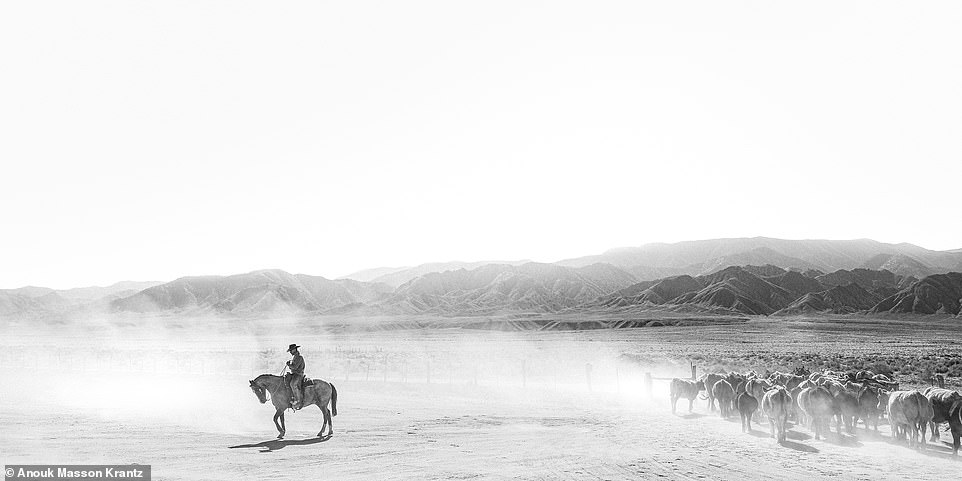
Anouk Krantz has produced another beautiful coffee-table book full of brand-new pictures from the American West
At times, symbols of the 21st century creep in – one picture shows a group of cowboys clustered inside a Starbucks as they await their orders.
Anouk says: ‘In American Cowboys, I’ve taken my work further into their community to include men, women, children, college kids, rodeo and ranching communities from different backgrounds in the heartland of the great American West and well beyond. These communities are not isolated pockets but are found across America where we might least expect them.’
The book is a feat two years in the making.
After her last book was published, Anouk – who is originally from France – travelled from her home in New York to again spend weeks at a time in the American West.
The majority of photos in American Cowboys are from this return to the region’s vast plains and scorched canyons.
Every night, she’d lay her head in hotels, motels, and bunkhouses. Sometimes she would even sleep in her car. Sometimes she’d accept the hospitality and generosity of the cowboy community.
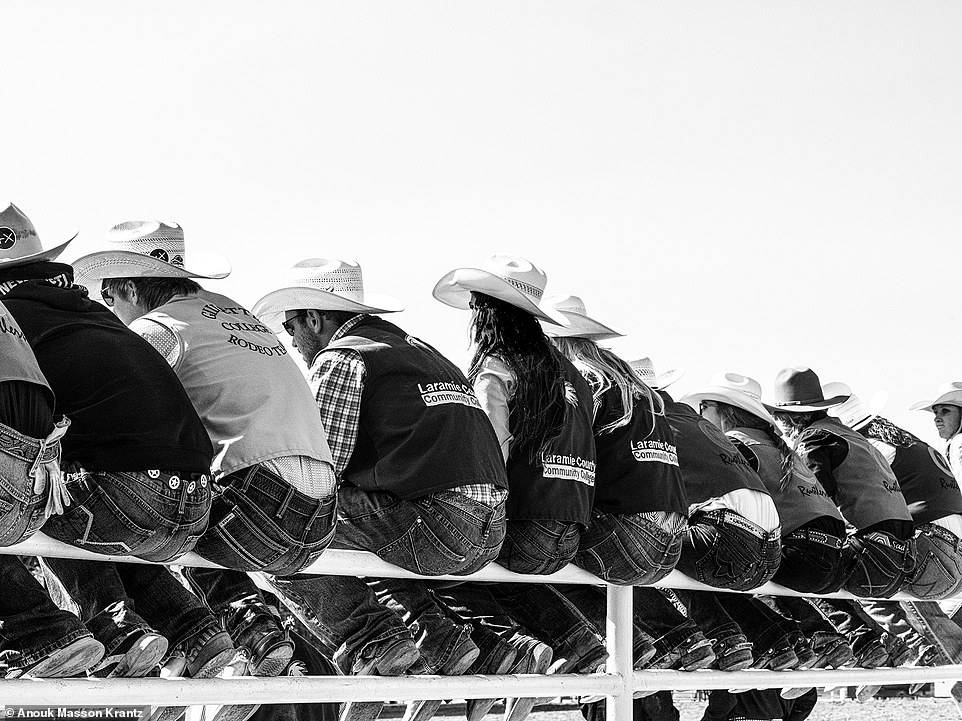
After her last book was published, Anouk – who is originally from France – travelled from her home in New York to again spend weeks at a time in the American West
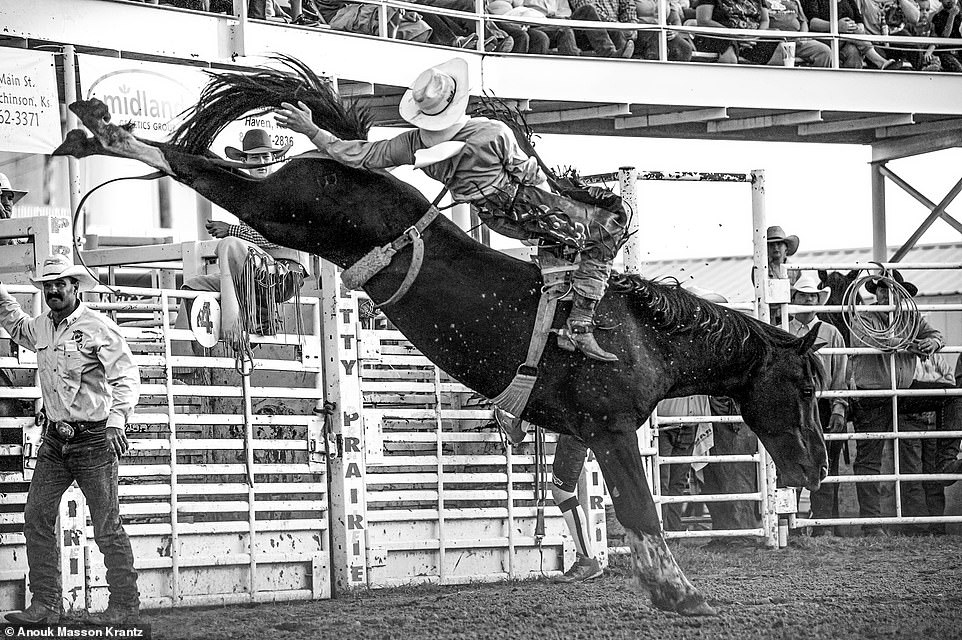
Anouk would lay her head in hotels, motels, and bunkhouses. Sometimes she would even sleep in her car. Sometimes she’d accept the hospitality and generosity of the cowboy community. She called this picture ‘The Beast’
‘I spent several nights on a cattle drive sleeping in a cowboy canvas tepee among other cowboys in the remote wilderness,’ she recalls. ‘Others have put me up in a guest bedroom and sometimes I even stayed in a first-class four-bedroom guest ranch house.’
In the introduction to American Cowboys, Anouk explains how she managed to earn the trust of the cowboys who invited her into their lives.
She writes: ‘It was difficult at first. Many of these ranchers – private and sceptical of strangers – did not have time or interest to share their lives with me. What was I doing here and why could I possibly be interested in them? As they got to know me, they invited me into their world. Over early breakfasts in the dark, and surrounded by their close ones, I would get to know their families and learn of their own long histories as early pioneers, through hard times and good.’

Anouk writes: ‘It was difficult at first. Many of these ranchers – private and sceptical of strangers – did not have time or interest to share their lives with me. What was I doing here and why could I possibly be interested in them? As they got to know me, they invited me into their world’
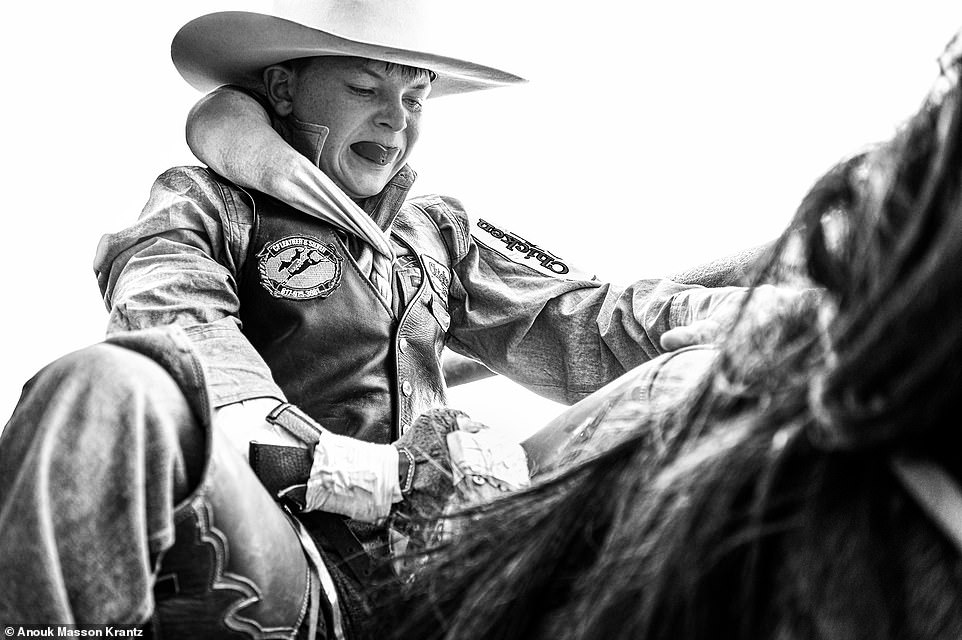
Cowboy culture is commonly associated with the gun-slinging Hollywood Westerns of the early 20th century. However, Anouk was repeatedly struck by the inaccuracy of these stereotypes
Anouk adds: ‘Over time, we grew closer and they made me feel welcome. I was now a part of their lives, as interesting a discovery to them as they were to me. I was surprised to learn that although we came from such remarkably different backgrounds, we share many of the same values and principles.’
And, after discovering her previous work, many members of the community reached out to her independently, offering to share their stories in her new book.
Anouk treasured each of these chance encounters. She says: ‘I constantly craved the next meeting or encounter since around every corner was an unimaginable new adventure that I could never have predicted.’
Cowboy culture is commonly associated with the gun-slinging Hollywood Westerns of the early 20th century. However, Anouk was repeatedly struck by the inaccuracy of these stereotypes.
She says: ‘I’m an outsider and, as with most people around the world, knew next to nothing about this culture. I was surprised to find that many of the overarching stereotypes about the Wild West and its cowboys couldn’t be further from the truth.’

A bartender at work in a quiet saloon, the counter coated in a layer of dust

Anouk says: ‘I was surprised to learn that although we came from such remarkably different backgrounds, we share many of the same values and principles’
Anouk first photographed rodeos in 2004, but it wasn’t until early 2018 that she set out on a mission to capture modern-day cowboys through her lens.
Initiating herself with the Wild West, she was impressed by the ‘strong sense of belonging’ amongst the community, admiring the cowboys’ ‘strength, independence, authenticity, integrity, and dignity’.
She says: ‘Their word is their bond and they have remained unchanged. This builds a culture of us – all together – helping each other out in the community and at the same time serving the country.
‘My work is a celebration of those values, the work ethic, the integrity, love for friends and family, community, and country, regardless of cultural background.’
In the new series, Anouk captured moments big and small. One shot shows a rancher and his horse wade through a river, as four dogs paddle to keep up behind them. Another sees a bartender at work in a quiet saloon, the counter coated in a layer of dust.
One of Anouk’s favourite images, titled Corner Pocket, shows two men playing pool in a bar, their cowboy hats illuminated under a Budweiser sign.
The contemporary cowboy community continues to welcome new ranchers. While working on her latest book, Anouk witnessed first-hand the cross-generational devotion to the cowboy way of life.
She says: ‘I have met first-generation ranchers who have decided to leave the American urban life for a new life in ranching all the way to ninth-generation ranchers whose grandchildren have returned to live on the family ranch after finishing college.

Anouk was impressed by the ‘strong sense of belonging’ amongst the community, admiring the cowboys’ ‘strength, independence, authenticity, integrity, and dignity’
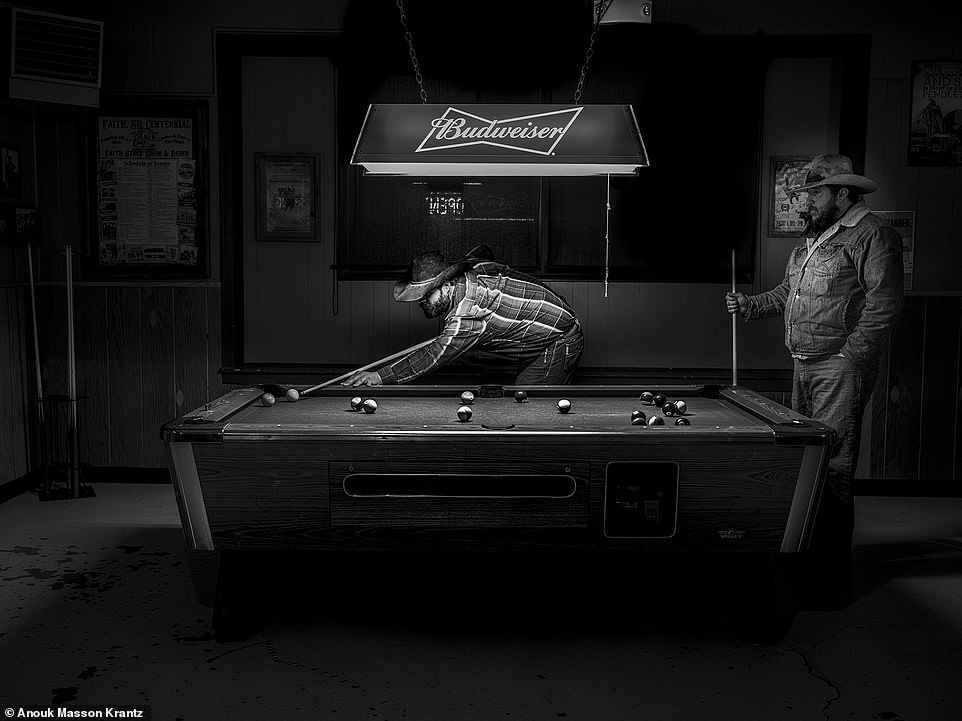
This is one of Anouk’s favourite images, titled Corner Pocket. It shows two men playing pool in a bar, their cowboy hats illuminated under a Budweiser sign
‘Don’t be fooled, it is a tough and a hard way of life where your paycheck will heavily depend on Mother Nature each year, but these people love this way of life and will rather make less than do anything else. These communities have been thriving in the shadows of this nation’s consciousness, and most don’t realize the strength and vibrancy of these people.’
One memory that stood out to her was a day spent with Derrick Begay, ‘an American Cowboy and a modern-day Navajo Legend’.
After they were introduced to one another in Texas, he agreed to meet Anouk at his ranch in Arizona a week later.
She recalls: ‘When I arrived at his AZ ranch the following week, I quickly learned that this was going to be quite out of the ordinary. When I arrived, Derrick had already outfitted three horses. We were going out to round up his cattle and I had little choice but to be excited about it.’
They spent the day together tending his cattle on horseback, traversing a river ‘where the horses could just barely maneuver at a chest-high depth’. On the other side of the river, they raced through 30ft- (9.1m) high saguaros, which are a type of cactus.
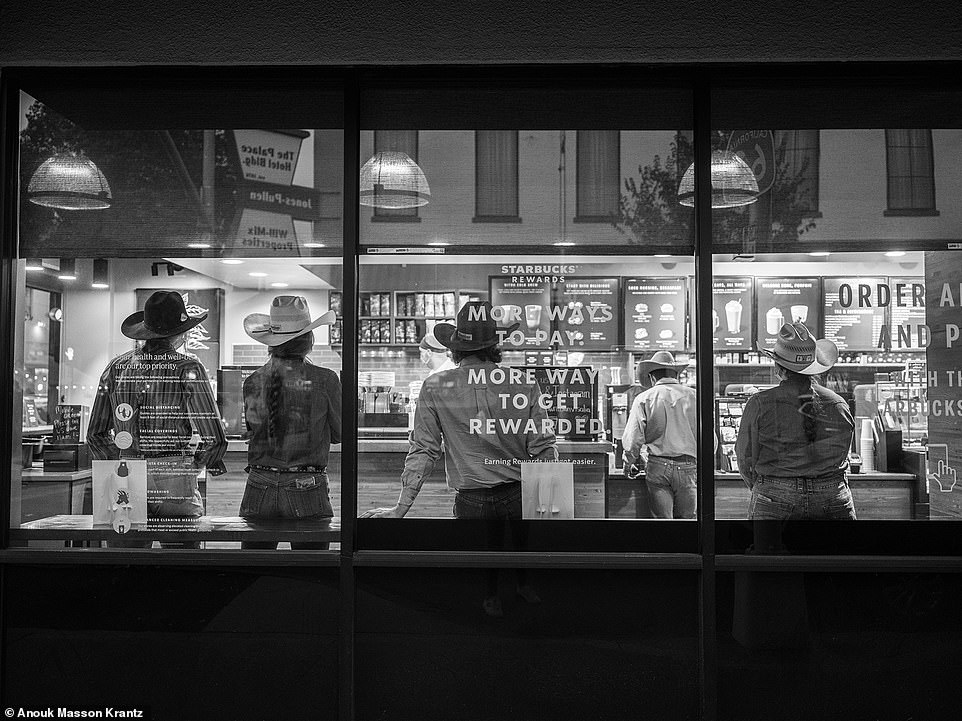
‘My work is a celebration of [cowboys’] work ethic, the integrity, love for friends and family, community, and country, regardless of cultural background,’ writes Anouk
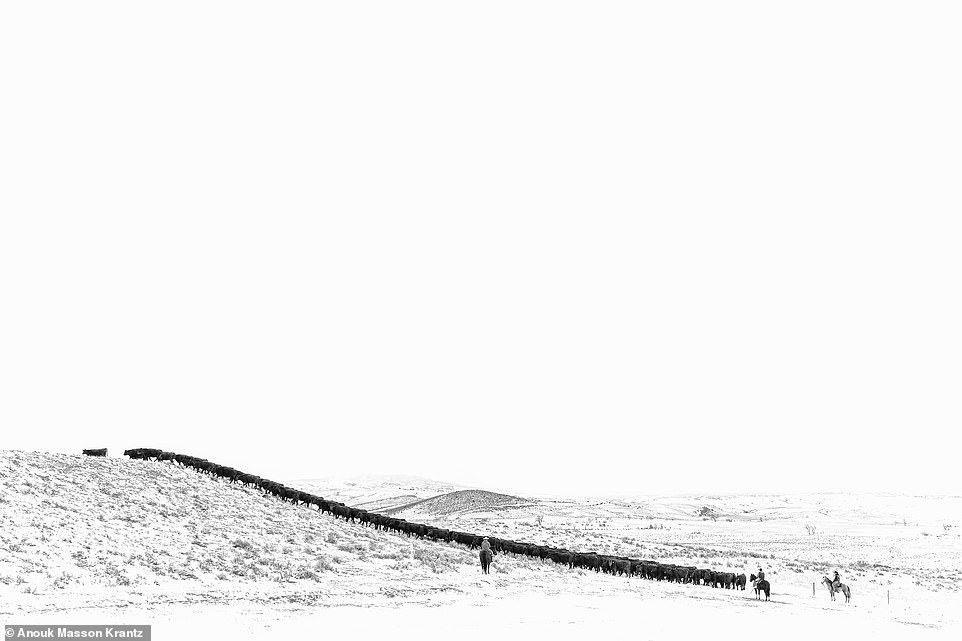
Cowboy communities have been thriving in the shadows of America’s consciousness, Anouk says
Describing their race through the desert, she says: ‘With a scream, Derrick suddenly took off in front of me and I dug my heels in and shot out from behind to try and catch up. This incredible race lasted about an hour at a full sprint – and yes, it was the greatest few hours right there as the sun was setting behind and endless desert of brush, saguaros, and dust. Saguaro spines layering my arms, which took me 10 days to remove.
‘But here is the thing, by the time we were done rounding up his cattle together and crossing that deep river again in pitch black skies, I could only think that this was the only way I could have known who he really is. Same for him. Here is a lifelong connection. Two remarkably different people who may have not systemically connected, but when you roll up your sleeves together, well you most likely will.’
Anouk has stayed in contact with the many characters she met along the way.
‘I continue to email, text and visit most of these new friends whenever I am close by,’ she says. ‘I hope to stay close to these wonderful people long into the future and only wish they lived closer to me.’
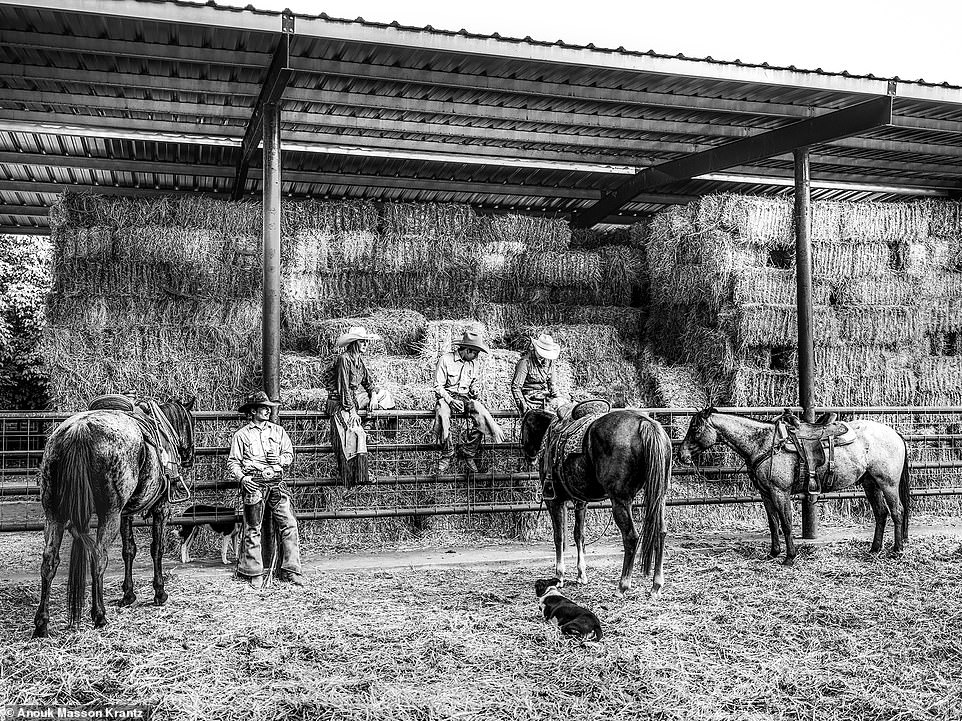
After discovering Anouk’s previous work, many members of the community reached out to her independently, offering to share their stories in her new book
American West is Anouk’s third fine art photobook. The first, Wild Horses of Cumberland Island, featured images of untamed horses living off the east coast of America.
What’s next? More cowboys. Anouk has several projects in the works, one of which centres around one of the largest ranches in America.
She says: ‘Among the mountains of Wyoming, this next series captures the daily lives of these cowboys over the course of two years.’
To find out more about Anouk and American Cowboys ($89/£65), visit her website and Images Publishing.
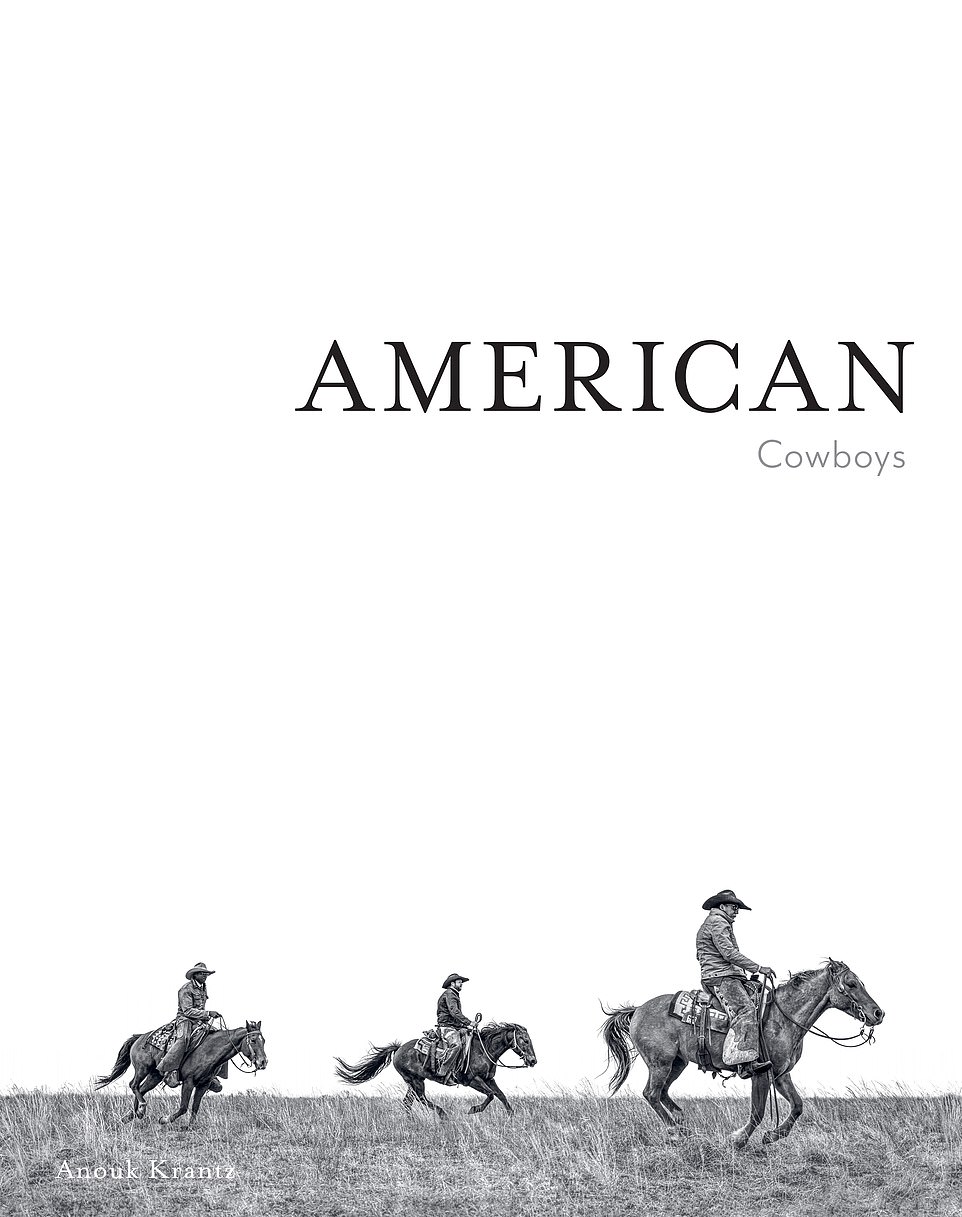
American Cowboys ($89/£65) is out now and published by Images Publishing
Source link : https://www.dailymail.co.uk/travel/travel_news/article-10017323/Stunning-images-Wild-West-captured-Anouk-Krantz-book-American-Cowboys.html












